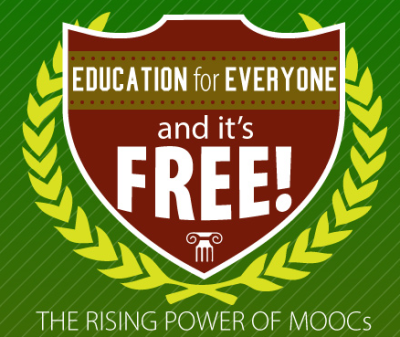
In just under six years, the term MOOC (Massive Open Online Course) has gone from a vague, abstract idea to becoming, “the academic buzzword du jour.”1 In just the past few years, MOOCs have exploded. Companies like Coursera, EdX, Udemy, Khan Academy and countless others, paved the way. Now, several of the MOOC platforms contain courses from such prestigious institutions as Massachusetts Institute of Technology, Harvard, University of California Berkeley, John Hopkins University, Duke, and many others.
Now that these MOOC platforms have been around for several years, there is a wealth of data concerning MOOC students. The data is incredibly interesting. Below are some statistics from Top10OnlineColleges.com, who also produced the below infographic:
Educational attainment of students who enroll in MOOCs:
- 37% have a B.S. degree
- 28% have a Master’s degree or profession
- 27% high school
Age and occupational makeup of MOOC students:
- Over 40% of students are under 30 years old
- Less than 10% over 60
- 88 % of MOOC students are male
- 62 % are employed
- 13% are unemployed…or retired
There are a great many interesting data points in the below infographic. It is really interesting to see ho much MOOCs have grown in such a short time:
- Chris Parr,Times Higher Education, “Mooc creators criticise courses’ lack of creativity,” 17 October 2013 ▲


